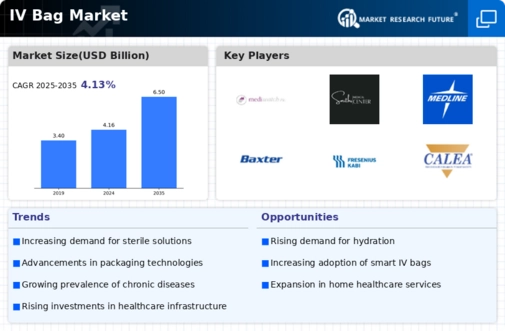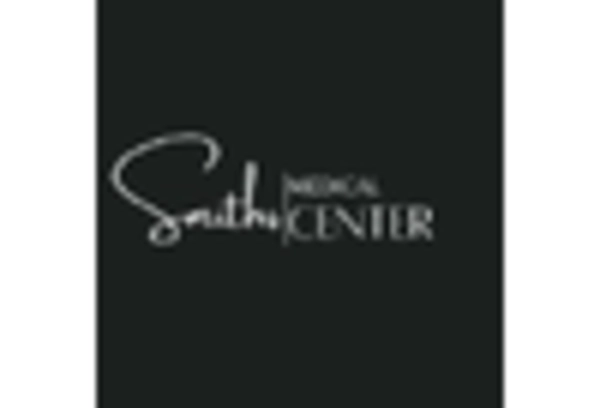Innovations in IV Bag Design
Innovative designs and materials in IV bags are transforming the IV Bag Market. Manufacturers are increasingly focusing on developing bags that are not only more durable but also safer for patients. For instance, the introduction of anti-microbial IV bags and those with integrated safety features is becoming more common. These innovations aim to reduce the risk of contamination and improve patient outcomes. Furthermore, the market is witnessing a shift towards user-friendly designs that facilitate easier handling and administration. As healthcare providers seek to enhance patient safety and streamline operations, the demand for advanced IV bag designs is likely to grow.
Rising Demand for IV Therapy
The increasing prevalence of chronic diseases and the aging population are driving the demand for intravenous (IV) therapy. As more patients require hydration, medication delivery, and nutritional support, the IV Bag Market is experiencing significant growth. According to recent estimates, the number of patients requiring IV therapy is projected to rise, leading to an increased need for IV bags. This trend is particularly evident in hospitals and outpatient settings, where IV therapy is a standard practice. The growing awareness of the benefits of IV therapy, coupled with advancements in medical technology, suggests that the IV Bag Market will continue to expand in the coming years.
Regulatory Support for IV Bag Safety
Regulatory bodies are playing a pivotal role in shaping the IV Bag Market by enforcing safety standards and guidelines. These regulations are designed to ensure the quality and safety of IV bags, which is paramount for patient care. Compliance with these regulations not only enhances patient safety but also fosters consumer confidence in IV products. As manufacturers strive to meet these stringent requirements, the overall quality of IV bags is expected to improve. This regulatory support is likely to drive innovation and investment in the IV Bag Market, as companies seek to develop products that comply with evolving safety standards.
Growing Preference for Home Healthcare
The shift towards home healthcare is reshaping the IV Bag Market. Patients increasingly prefer receiving treatment in the comfort of their homes, which has led to a rise in the use of portable IV bags and infusion systems. This trend is particularly relevant for patients with chronic conditions who require ongoing IV therapy. Home healthcare services are expanding, and with them, the demand for IV bags that are suitable for home use is likely to increase. The convenience and flexibility offered by home healthcare solutions suggest that the IV Bag Market will adapt to meet these changing consumer preferences.
Increased Investment in Healthcare Infrastructure
Investment in healthcare infrastructure is a crucial driver for the IV Bag Market. Governments and private entities are allocating substantial resources to enhance healthcare facilities, particularly in developing regions. This investment often includes the procurement of essential medical supplies, including IV bags. As healthcare systems expand and modernize, the demand for IV therapy and associated products is expected to rise. Reports indicate that healthcare spending is on the rise, which could lead to a more robust market for IV bags. This trend highlights the importance of infrastructure development in supporting the growth of the IV Bag Market.


















Leave a Comment